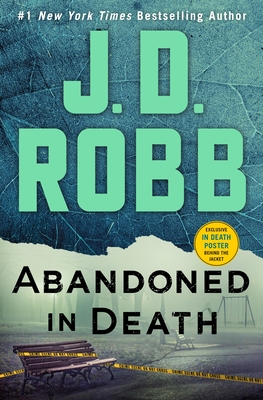 Abandoned in Death (In Death, #54) by J.D. Robb
Abandoned in Death (In Death, #54) by J.D. Robb Format: eARC
Source: supplied by publisher via Edelweiss
Formats available: hardcover, large print, paperback, ebook, audiobook
Genres: futuristic, mystery, romantic suspense, thriller
Series: In Death #54
Pages: 368
Published by St. Martin's Press on February 8, 2022
Purchasing Info: Author's Website, Publisher's Website, Amazon, Barnes & Noble, Kobo, Bookshop.org, Better World Books
Goodreads
Homicide detective Eve Dallas must untangle a twisted family history while a hostage’s life hangs in the balance—in the new In Death novel by #1 New York Times bestselling J. D. Robb.
The woman’s body was found on a bench in a New York City playground. She was clean, her hair neatly arranged, her makeup carefully applied. But other things were very wrong—like the tattoo and piercings, clearly new. The clothes, decades out of date. The fatal wound hidden beneath a ribbon around her neck. And the note: Bad Mommy, written in crayon as if by a child.
It seems clear the killer’s childhood was traumatic—a situation Eve is all too familiar with herself. Yet the clues point to a perpetrator who’d be around sixty, and there are no records of old crimes with a similar MO. What was the trigger that apparently reopened such an old wound and sent someone over the edge? When Eve learns that other young women have recently vanished, the case grows even more urgent—and to solve it she’ll need to find her way into a hidden place of dim light and concrete, into the distant past, and into the depths of a shattered mind.
My Review:
This series is a strange sort of comfort read for me, so I usually say that each entry in the series is at least a chance to visit with old friends. Sometimes it’s more, but it’s always at least that.
Abandoned in Death is one of the instances where it was also at most that. I loved seeing how Dallas, Roarke and the gang are doing, but the way this one began – and the entire case – really, seriously creeped me out.
I felt creeped enough the whole way through that I didn’t enjoy this entry in the series as much as I usually do. And I’m a bit sad about that because I was seriously looking forward to this one.
Once upon a time in Eve Dallas’ world, which is actually now in ours, a desperate and despairing young woman left her child on a church doorstep in the middle of the night. Then she drove straight into a lake and prepared to drown.
But she didn’t. Instead, she dragged herself out of the car and the water and passed out along the side of the road not too far away. She was rescued by a good Samaritan who happened to be a doctor, who took her home, treated her injuries, fell in love with her and married her.
Between the trauma of her injuries – along with the effects of her depression and her drug addiction – her life before her rescue was a complete blank. She didn’t remember the child, the drugs or the attempted suicide. She lived her life from that point forward in the here and the now and it was a good life.
In Eve Dallas’ here and now, someone dumped the corpse of a young woman in a children’s playground. The playground is just around the corner from the house that Eve’s friend Mavis is moving into, with her family. It hits MUCH too close to home, putting Eve in a bit more angst than any trip to the “angst factory” of her own.
Not that this case doesn’t have a bit of that as well.
The investigation of the case is interesting. Weird, but interesting. Weird because the body was dressed and made up to fit a certain image – that of a blonde woman in her mid-20s with a tramp stamp, a belly piercing, cheap party clothes and overdone makeup.
She’s made up to be a woman in her mid-20s in the early 2000s. All the brands, the style, the look, the colors all fit that era. Which means that if someone is getting vicarious revenge on their mother, that person is now in their 60s.
And the first thing that Dallas and company discover about the crime is that their victim isn’t the only woman taken who could be made up to fit the image. She’s just the first to die.
Escape Rating B-: So, the opening of this one weirded me out and the parts of the story that were told either from the killer’s perspective or from the mother’s distant past just didn’t work for me. I didn’t want to be inside the murderer’s head AT ALL and found myself skimming through those sections and the past bits.
Some of that may have been that the originating events were already in the past of the real world – kind of like that double-take you do when confronted with the fact that 1980 is as far away from 2020 as 1940 is from 1980. That time passes way more quickly than we like to think about.
However, whether it was because of skimming those bits quickly or because the murderer was simply very good at hiding in plain sight I had absolutely no idea who was doing it before Dallas gets there herself. I recognized that the wild goose she chased at one point was a red herring, but hadn’t figured out who the real culprit was until the investigators got there.
That there’s a clock ticking more obviously in this case from the usual made some of the normal cop shop gallows humor fall a bit flat – at least for me. No one has much of a sense of humor in this one.
At the same time the rather humorous blossoming of young love between Feeney’s intern and Nadine Furst’s intern (and their respective mentors reaction to same) was a nice little bright stop that did fit well into the story. It also points out just how huge the team ended up being on this one as Dallas needed people to investigate not just the murders happening now, not just whodunnit, but also who in the past it was being done to in proxy.
They were solving an equation for multiple unknowns, and that level of research and search and cooperation and puzzle solving was, as always, fascinating. Whatever team Dallas puts together for a case always gives a master class in competence and this time was no exception.
In spite of the mess that’s uncovered at the end.
All of this adds up to Abandoned in Death being an interesting entry in this marvelous long-running series that wasn’t quite as satisfying for me as they usually are. That’s happened before, as is expected in a series that is 54 books and counting and shows absolutely no sign of stopping. Next up is Desperation in Death, coming this fall and I’m already looking forward to it!

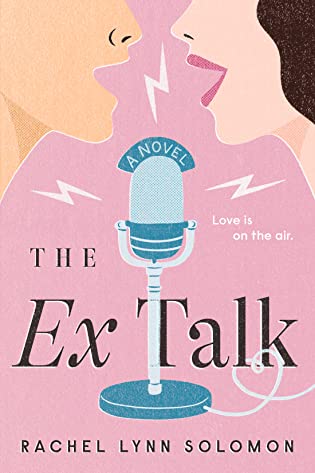 The Ex Talk by
The Ex Talk by 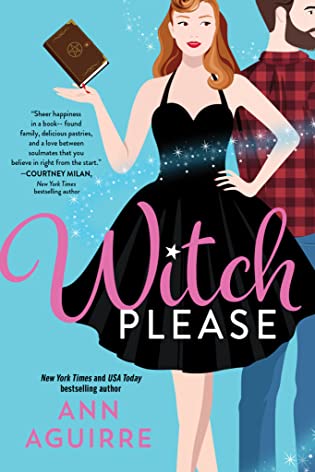 Witch Please (Fix-It Witches, #1) by
Witch Please (Fix-It Witches, #1) by 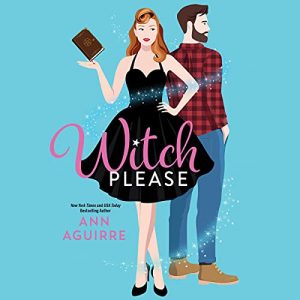 Escape Rating B-: I am of two minds on this book in so many ways!
Escape Rating B-: I am of two minds on this book in so many ways!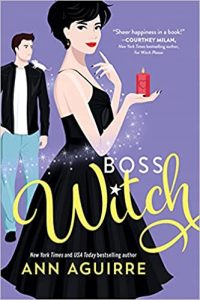 I was also fairly convinced early on that Gram was pretty much the Wicked Witch of the (Mid)West, so I wasn’t exactly surprised to discover that my conviction was close to the actual mark and not just my own feelings about just how toxic her manipulations really were. And I’ll admit that I really needed to see an epic takedown of Gram over this and did not get the catharsis I was looking for.
I was also fairly convinced early on that Gram was pretty much the Wicked Witch of the (Mid)West, so I wasn’t exactly surprised to discover that my conviction was close to the actual mark and not just my own feelings about just how toxic her manipulations really were. And I’ll admit that I really needed to see an epic takedown of Gram over this and did not get the catharsis I was looking for.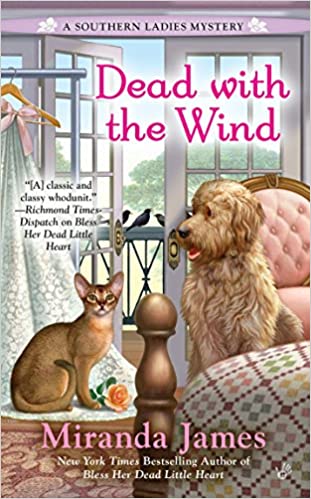 Dead with the Wind (Southern Ladies Mystery, #2) by
Dead with the Wind (Southern Ladies Mystery, #2) by 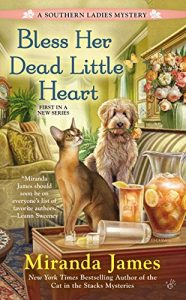 On what was feeling that Mondayest Monday ever, I needed a comfort read. Since I’m currently caught up with the
On what was feeling that Mondayest Monday ever, I needed a comfort read. Since I’m currently caught up with the  So I felt a bit more discomfort than desired for something I picked up as a comfort read. Even though Sondra’s death was very cathartic. Some characters just need to be let out of a story at the very first opportunity. By the time the killer’s identity was revealed it wasn’t much of a surprise – nor was I expecting it to be as this is not that kind of book.
So I felt a bit more discomfort than desired for something I picked up as a comfort read. Even though Sondra’s death was very cathartic. Some characters just need to be let out of a story at the very first opportunity. By the time the killer’s identity was revealed it wasn’t much of a surprise – nor was I expecting it to be as this is not that kind of book.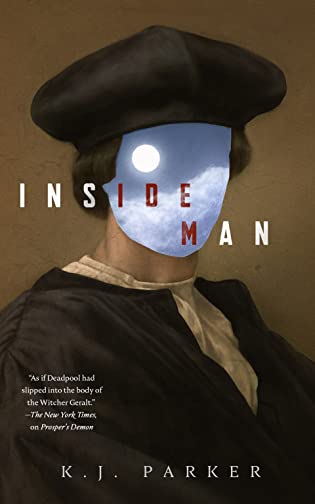 Inside Man by
Inside Man by 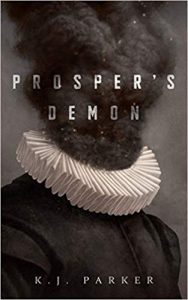 I picked up Inside Man because I was tempted by
I picked up Inside Man because I was tempted by 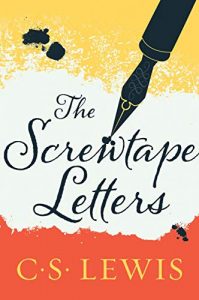 There were points where I had to double check to be sure that I hadn’t accidentally downloaded The Screwtape Letters instead. If you’re not familiar, Screwtape is a senior demon straight out of the mind of C.S. Lewis – and dedicated to his good friend J.R.R. Tolkien, which I how I first made Screwtape’s acquaintance.
There were points where I had to double check to be sure that I hadn’t accidentally downloaded The Screwtape Letters instead. If you’re not familiar, Screwtape is a senior demon straight out of the mind of C.S. Lewis – and dedicated to his good friend J.R.R. Tolkien, which I how I first made Screwtape’s acquaintance. The Venice Sketchbook by
The Venice Sketchbook by 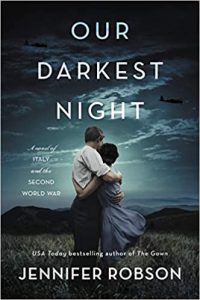 Escape Rating B-: World War II is a rich period for historical fiction of all types and stripes. To the point where I have three books in a row that are set during the same period, Friday’s
Escape Rating B-: World War II is a rich period for historical fiction of all types and stripes. To the point where I have three books in a row that are set during the same period, Friday’s 
 The Bookstore on the Beach by
The Bookstore on the Beach by 
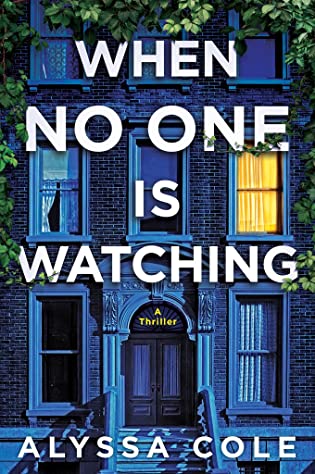 When No One is Watching by
When No One is Watching by 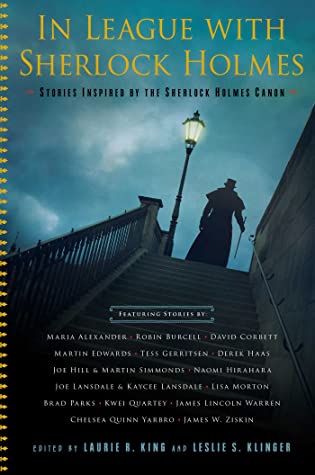 In League with Sherlock Holmes: Stories Inspired by the Sherlock Holmes Canon by
In League with Sherlock Holmes: Stories Inspired by the Sherlock Holmes Canon by  Because I’m a sucker for a good Sherlock Holmes pastiche, and in the right mood even for a bad one, I’ve eagerly anticipated each of these collections as they’ve appeared and I’ve read every single one of them, beginning with the very first,
Because I’m a sucker for a good Sherlock Holmes pastiche, and in the right mood even for a bad one, I’ve eagerly anticipated each of these collections as they’ve appeared and I’ve read every single one of them, beginning with the very first, 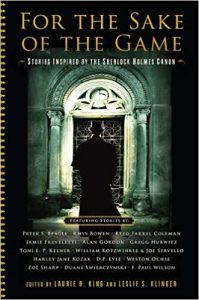 James W. Ziskin’s The Twenty-Five-Year Engagement is a classic pastiche, featuring the original Holmes and Watson solving a case that was so old and so cold no one even knew it was a case. It’s not the first time, that the unexpected return of a person long-though deceased has provided new clues to an old murder for the Great Detective, and this one shows the deft hand of both the investigator and the writer in constructing – and solving – such a conundrum.
James W. Ziskin’s The Twenty-Five-Year Engagement is a classic pastiche, featuring the original Holmes and Watson solving a case that was so old and so cold no one even knew it was a case. It’s not the first time, that the unexpected return of a person long-though deceased has provided new clues to an old murder for the Great Detective, and this one shows the deft hand of both the investigator and the writer in constructing – and solving – such a conundrum.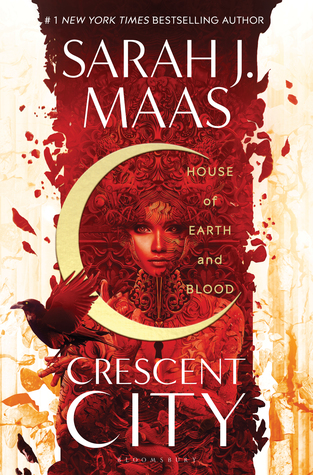 House of Earth and Blood (Crescent City, #1) by
House of Earth and Blood (Crescent City, #1) by 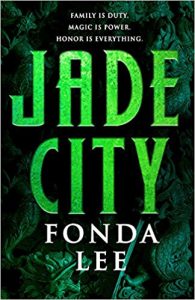 Initially, what dragged me into this story was the sheer complexity of the worldbuilding. This is not a place I’d EVER want to live, because it is seriously fucked up – especially for the original recipe humans – but the mixture of 21st century technology with high-powered magic and authoritarian rule by powerful immortals blends into a world that is both easy to envision and fascinating to explore.
Initially, what dragged me into this story was the sheer complexity of the worldbuilding. This is not a place I’d EVER want to live, because it is seriously fucked up – especially for the original recipe humans – but the mixture of 21st century technology with high-powered magic and authoritarian rule by powerful immortals blends into a world that is both easy to envision and fascinating to explore.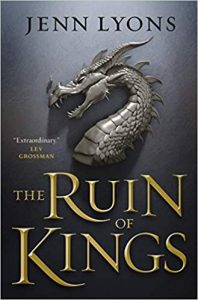 Some of that was language. It felt like all of the physical descriptions of people were repeated whenever they appeared, over and over and over. And it was very obvious that all of the people in this story were all extremely conventionally attractive. But all of the descriptions were overblown, something that was particularly obvious in audio.
Some of that was language. It felt like all of the physical descriptions of people were repeated whenever they appeared, over and over and over. And it was very obvious that all of the people in this story were all extremely conventionally attractive. But all of the descriptions were overblown, something that was particularly obvious in audio.